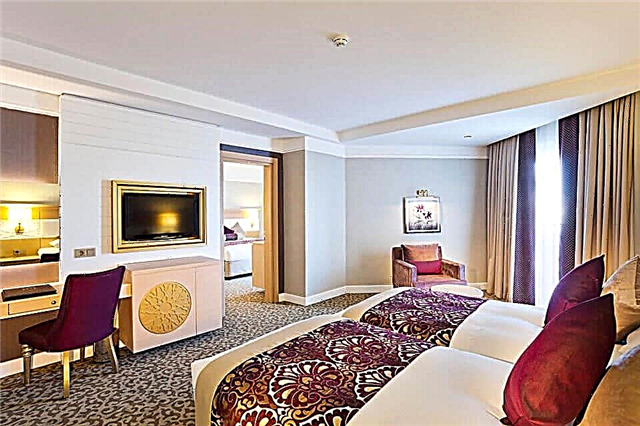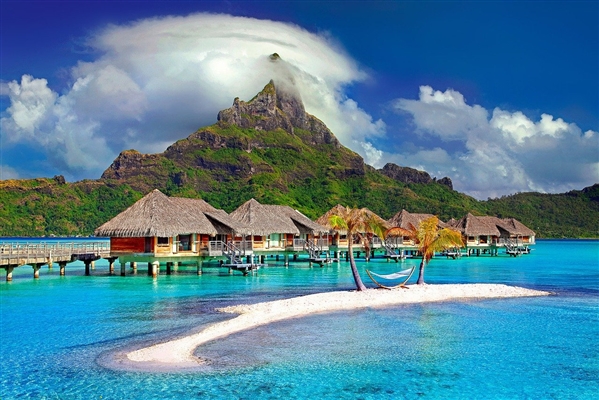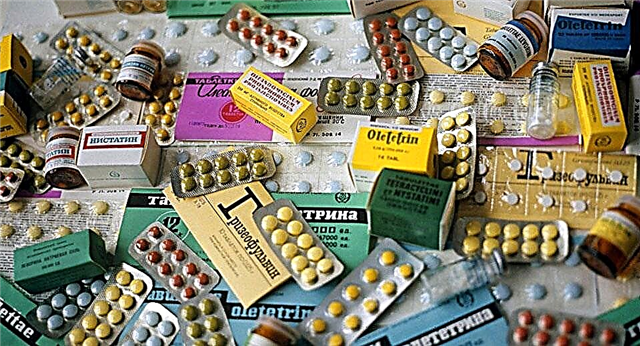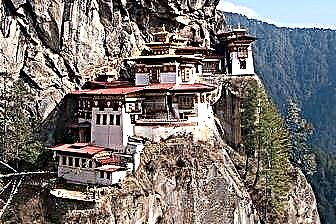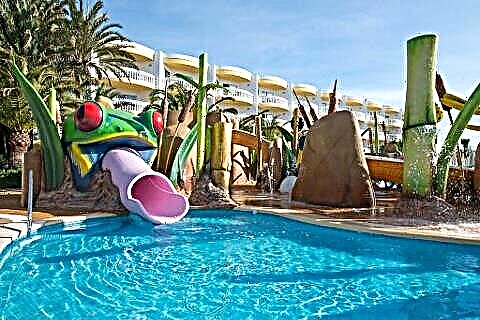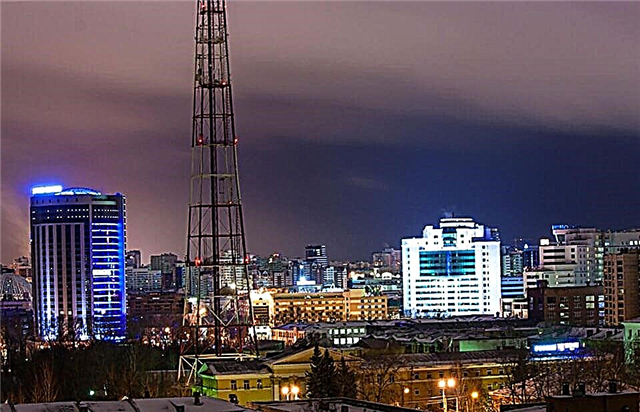The eastern slope of the ancient Ural Mountains became the birthplace of a large city, the administrative center of the Sverdlovsk region. Yekaterinburg was founded in 1723 and named after Catherine II. Since then, the names of great political figures, their fates have been associated with the city, which stands along the banks of the Iset River. Now it is not only an industrial agglomerate of the Middle Urals, but also a major tourist center. Natural and man-made sights of Yekaterinburg are worthy of your acquaintance. The number of people wishing to see these historical sites is increasing every year. Their visit is included in the interesting tourist route "Big Ural Ring".
Estate of the Rastorguevs - Kharitonovs
The famous Kharitonovsky Garden, which was admired by Alexander I, a complex of buildings of a huge estate located on Voznesenskaya Hill and is a beautiful architectural monument. Most of the garden's trees have been growing here for over 200 years. You can walk on it at any time. You cannot enter the premises without an excursion group, but you can walk around, look from the side at the beautiful facades of the ensemble on your own. The estate houses a Museum and a children's art school. Additional interest in the monument is associated with numerous legends living within the ancient walls.
A hole formed in 1924 near the central entrance opened a tunnel leading to underground passages from legends. The construction of the estate began in 1725, together with the Church of the Ascension. The architectural project was based on a classic example of manor buildings from the beginning of the 19th century. The representative appearance of the building is formed due to the angular location of the main building. In the background, in a beautiful park, there is a lake with a rotunda.
Zoo
You can see the Binturong cat bear, get acquainted with 70 species of animals listed in the International Red Book, look at the inhabitants of forests, rivers of the Urals, exotic representatives of the tropics during an excursion to the zoo. It began its work in 1930 with 60 inhabitants. Now the zoo is home to 380 species, 1200 units. The five sheltered pavilions are occupied by heat-loving animals: lemurs, gibbons, monkeys, and an elephant. Turtles, tropical frogs, parrots, tiger python. Predators who are not afraid of the cold stroll through open enclosures.
The zoo hosts many interesting recreational activities for children. This is a funny birthday of animals, themed holidays, for example, pumpkin day, pestilence. Cats, cooks, biodiversity, tit day, etc. In addition to the familiarization excursion, themed trips around the zoo "Heroes of Fairy Tales", "Predators and Herbivores", "Feathered Monkeys", "Intelligence in the Animal World" are popular. And here they choose "Zoomiss" on the basis of voting on the site at the specified time. On the territory of the zoo there are children's attractions and a cafe. The zoo is open all year round.
We recommend unusual excursions:
- Get to know the city in 3 hours - factories, green squares, estates, churches and the district of security officers - a kaleidoscope of history in one walk (520 rubles per person)
- Dungeons - look at the city from the inside out and get a dose of adrenaline (520 rubles per person)
- Time travel - immerse yourself in different eras of the city's life, see iconic places and feel the local flavor (475 rubles per person)
- Architectural and gastronomic walk - explore the Ural constructivism and taste local cuisine in a sincere atmosphere (2600 rubles for a group of up to 6 people)
- From Stone Tents to Lake Shartash - try on the role of a gold digger and walk the paths of ancient peoples (2550 rubles for a group of up to 12 people)
Boris N. Yeltsin Presidential Center
The political views of the first president of Russia, the formation of his activities as an extraordinary personality were born in the house, on the street of this city. He was able to infect a large number of people with his ideas, tasks and lead to a new life in the country. The stages of the difficult path of the president were preserved in the memory of people in the expositions of the Yeltsin Museum and Center. The building is located on the same street where Yeltsin once lived. It has a gallery space with exhibitions of works by contemporary artists. Concert hall, restaurant, cafe, bookstore.
Events of the city's cultural life are held here. The Center was opened in November 2015. The Museum's expositions were created with the participation of the Museum Design Agency of America (headed by Ralph Applebaum). The basis for the creation of the museum is the concept of "seven days", developed by director Pavel Lungin. It has 9 thematic halls, such as "Presidential Marathon", "Farewell to the Kremlin", "Hall of Freedom", "August putsch". They are invited to visit from Tuesday to Sunday from 10 am to 9 pm.
Temple on blood
A functioning Orthodox church is located along the slope of the Voznesenskaya Gorka. This is a beautiful ensemble, which includes the buildings of the Upper and Lower temples, the Patriarch's courtyard. The consecration of the Upper Church took place in July 2003, and the Lower Church in 2010. The erection of a building with five domes, facades trimmed with red granite, is associated with the unforgettable events of Russian history - the execution of the royal family. Previously, this place was the house of Ipatiev, where the family met their death.
The decision to demolish the house (in the city of Sverdlovsk) was made in August 1975 by a secret resolution of the Central Committee of the CPSU. People have not forgotten this tragedy. Flowers were brought here, prayers sounded here. The desire to build a temple grew stronger every year. The erected temple has 5 floors above the ground and two underground. The perimeter of the facade of the temple is decorated with bronze icons dedicated to the most revered saints in Russia. In the Lower Church there is a crypt, a symbolic image of the room where the execution of the Tsar's family took place. In the upper part there is a beautiful iconostasis made of snow-white marble. Among the main shrines is the icon of the Mother of God "Three-handed", which belonged to the family and was a witness to everything that was happening. It's a shame she can't speak in words.
Shartash stone tents
The Ural mountains appeared on our planet a long time ago, the rich bowels have more than once become elements of fairy tales and legends. People lived here for a long time, and bad weather, sun, rains formed their appearance. In many places, "stone tents" appeared in the form of ordered horizontal slabs. Such a natural monument grew more than 300 million years ago next to Lake Shartash, not far from the future Yekaterinburg. Archaeological excavations have proven that several generations of people have lived here since the Neolithic era.
At the top of the granite massif, an altar in the form of a stone bowl for sacrifices was discovered. It used to be difficult to get to this place. The impassable forests and swamps made it difficult to survey the "Tent Tract". But the city grew, they entered its territory in 1860. Now it is the Kirovsky district, and the Tents are a favorite resting place for the townspeople. Sports events are held here, concerts are performed over the granite amphitheater located at the foot of the ancient Shartash Stone Tents.
Historical Park "Russia - My History"
Preserving the true elements of historical events, interpreting them from the point of view of various historical facts, evidence is an important task in any country. For Russia, the Urals are considered a special place (supporting land) in the formation of the industrial power of the state, its political views and convictions. For this purpose, Museums are opened, thematic exhibitions, seminars, symposia on history, and other events are held.In the city, this role is played not only by the famous Yeltsin Center, but also by the new park "Russia - My History".
In it, many historical stages of the formation of Russia and its cultural traditions are presented without excessive engagement, artificial emotions. The expositions of the modern multimedia park cover the period from Rurik to the present day. All halls are filled with screens, new equipment with the latest technologies. Of interest are 4, compiled on the basis of materials from different historical periods of Russia. Institutes of the Russian Academy of Sciences, the Department of Culture of the Patriarchate of Russia worked on the creation of the park.
Central Park of Culture and Rest named after V.V. Mayakovsky
The main recreation area of the townspeople with an open area for holding festive festivities appeared in the Iset bend in 1934. Here, among the birch grove, the holidays of the old city were held. Sverdlovsk Central Park received its current name in the same year in honor of the 40th anniversary of the poet. At first, it was a green area with an alley, a pond, a dance floor, and three attractions. Later, a cinema and a summer circus began to work. During the war years, a reconnaissance battalion was located in the park. A monument in the form of a motorcycle wheel is erected in his memory.
The main reconstruction of the park took place in the period 1950-1960. The sculpture of Mayakovsky was installed in 1957. The park has become the leading among similar recreation areas in the RSFSR. Now, in a popular place for townspeople, it is proposed to walk along an alley with new sculptures by modern masters, sit next to a light and music fountain, and take children for a ride on a special railroad. The amusement zone provides elements for adults and children. In the summer theater, songs of local, visiting performers are played.
Arboretum
An ideal area for walking and recreation at any time of the year has existed in the city since 1934. A few years later, it expanded into a new territory, which became the second part of the general Dendrological Exhibition Park. It is decorated with over 300 species of various trees, beautiful flower arrangements, cozy ponds, on the banks of which holiday picnics are proposed. The first part of the park appeared next to Pervomayskaya Street, in the place of a swamp, from which a spring used to flow, the Malakhovka River. The inhabitants of the city came here for delicious water. Thanks to the activities of the Green Building Station nursery, acclimatized species of trees and shrubs have appeared in the park. They still adorn the alleys of the park.
The second part on 8 Marta Street was created in 1948 after the French style of parks. On the territory there is a large flower greenhouse with tropical plants, the Alexander Nevsky chapel has been restored, and a large fountain has been built in the center of the park. Exhibitions of decorative and landscape gardening elements are held annually. Residents of the city come here to buy a beautiful bouquet, seeds, seedlings.
Observation deck "Vysotsky"
To see the city from a bird's eye view is interesting for guests and local people. A feeling of extraordinary pride in its beauty, the opportunity to show the wonderful place of the ancient Ural Mountains appears when you visit the observation deck on the 52nd floor of the Vysotsky Business Center. Once this building was the most famous high-rise in the Urals. From here the surroundings are clearly visible at a distance of 25 km.
Here it is Shartash lake, Verkh-Isetsky pond, Iset river. A beautiful embankment, the domes of the Church on the Blood, the Yeltsin Center, theaters, parks, new buildings, large shopping centers and even the satellite towns of Berezovsky and Aramil. Using the audio guide, you can listen to the fascinating history of each object (German, Chinese, Russian, English).
Special binoculars allow you to see every detail of the city's sights. An interesting "Bench of Reconciliation" is equipped on the observation deck. The seats on it stand at an angle and people will surely find themselves sitting shoulder to shoulder. The site has a safe fence. The event "Skyscraper Run" is held for it. It has become traditional since 2013 and is popular with residents of the city of different ages. Photos taken at a height conquer with originality and unexpectedness.
Art Museum
One of the most significant museums in the Urals opened in 1936. The main collection came from the Museum of Local Lore of the Sverdlovsk Region. During the war, many works of art from the Hermitage were kept here. Later, some of them became the property of the local museum. The exhibitions of the museum contain unique expositions from the objects of artistic casting of the Urals, paintings by the avant-garde masters of the 1920s. A collection of icons of the 17th - 20th centuries, Russian art from different periods.
The collection is constantly replenished with the help of the Tretyakov Gallery, the Pushkin Museum, and the State Fund. The attraction is located on the banks of the Iset River in the area of the Historical Square. The building itself is considered a museum value. It was the Mining Hospital, built for the workers of the railway plant in 1749. Another building was allocated for the museum's expositions later, and it is located at 11 Weiner Street. There was a wholesale shop for the manufacture of the famous merchant of the first guild Bardygin.
Now at the museum there is a school for the development of children, a virtual branch "Russian Museum", a cinema, a shop. The Kasli pavilion of the museum houses the largest collection of cast iron products made in Russia. The cast-iron architectural structure is included in the lists of cultural monuments of UNESCO.
Historical square
On the 250th anniversary of the founding of the city (1973), he received a special gift in the form of the Historical Square. Here it was born together with the buildings of the Yekaterinburg plant. At this place, important stages in the development of the capital of the Urals have been preserved. The peculiarity of the local landscape is reflected in the interesting layout of the square. A memorial zone was built on the left bank of the Iset.
Its museum part was formed on the right coast. Historical buildings (parts, whole buildings) are considered the memorial property of the park. These are fragments of fences, gates, expositions from elements of the old industrial technology of the Urals. The buildings of the iron smelting plant are equipped with a museum of fine arts, a department of nature of the museum of local history. In the old water tower there was a place for exhibitions of blacksmithing.
In another zone there is a "rock garden" where the untold riches of the Ural Mountains are presented. Here it is also proposed to look at the monument of hydraulic engineering achievements in the form of an old dam, or "Plotinka", as the locals affectionately call it. Several monuments have been established on the territory, two rotundas and the City Pond have survived. Residents love this place where the city's festivals and fun activities for children take place.
Memorial "Black Tulip"

The Russian army often came to the aid in the battles of different countries. Many of our sons and children died in heavy battles. With anxiety and horror, the mothers thought about the terrible announcements of the death of their children. A terrible tragedy was the appearance of the "Black Tulip" or an airplane with the bodies of the dead, brought to their homeland. This action became the idea of creating a stylized monument to commemorate the victims. In the central part of the composition there is a figure of a soldier surrounded by the frame of their aircraft elements.
The names of 240 Ural soldiers who died in the Afghan war are written on 10 metal pylons covered with special protection. After the end of the Chechen events in 2002, granite steles with the names of the victims appeared nearby. The opening of the Black Tulip monument took place on August 5, 1995. Complete reconstruction was carried out in 2013. The monument is located on the square of the Soviet Army. Flowers brought by guests, residents of the capital of the Urals, always burn with a bright flame here. There are monuments with the same name in other cities of Russia: Serpukhov, Petrozavodsk, Yurga, etc.
Museum of the History of Stone Cutting and Jewelry Art
The untold wealth of the Ural Mountains has been used by man for various purposes since ancient times. Ancient people learned how to process stones, precious metals, creating household items and unique jewelry. The traditions of stone-cutting and jewelry art have not disappeared along with the advent of new technologies and artificial materials. You can see rare masterpieces, learn the details of ancient processing methods during an excursion to the interesting Museum of Yekaterinburg.
Among the rare objects is the famous 1.5 m high vase made of Kalkan jasper. Items made of colorful malachite (they are also present in the colorful halls of the Hermitage), granite, multi-colored marble, together with rare items made of silver and gold, fill the museum's expositions. This is the only place in Russia where the technology of traditional development of the unique skill of the Urals is presented (in such a large volume). A separate exposition is reserved for products made by contemporaries. This confirms the preservation of traditions, the continuation of stone-cutting and jewelry art.
Monument to the group "The Beatles"
The appearance of the Liverpool four with extraordinary music, which quickly conquered the world, became the stage of an entire era, which has its own joys and difficulties. The world of adolescents in the 60s and 70s sparkled with bright, previously unknown colors. The songs of the group became a dream, an imitation. The reality of recognition of the great singers of our time in our country came later. There was a period when The Beatles' songs were banned by a brutal totalitarian system. Despite this, performers of their favorite songs appeared in different regions of the country. Thanks to the actions of the Ural Beatles Club, a monument to legendary names has appeared in the city.
The contours of the figures were made in 2007 from cast iron at a plant in a small town in the Sverdlovsk region. All four contours are easily identifiable by the names of their owners. This idea of the monument was proposed due to the special attitude towards the singers, who were the romantic dreams of young people. Interestingly, the figure of John Lennon was cast on his birthday. And the monument was opened in 2009 by the famous group "The Quarryman", created by Lennon. It stands on the banks of the Iset on a special brick wall, with an inscription from the song: "The love you take, Is equal to the love you make". A path of solemn black marble leads to it.
Museum of Military and Automotive Equipment UMMC
The exhibition area of the private museum of Russia displays over 500 pieces of equipment used during the war. Unique collections of awards, military regalia, various types of weapons, equipment, uniforms, military insignia. The samples correspond to the period from the beginning of the 18th century to our time. The museum has two exhibition areas: for military and automotive equipment.
The railway station "Uzlovaya", reconstructed from the surviving photographs of the station "Kapralovo" from the town of Revda, Sverdlovsk region, is interestingly decorated. As if the station building, the water tower, steam locomotives with tanks, heating units, platforms and armored vehicles received a new life. The exposition is equipped with a wartime operating room with all used medical instruments. The Museum offers to see several models of real fighters, a bomber, and various artillery systems.
Cars produced in Russia at different times stand separately. Here you can even see a replica of the very first car invented by Karl Benz, Ford-A 1928, which became the prototype of the first Soviet car (GAZ-A), Buick 32-90 1932, a sample for the L-1 car, created at the Krasny Putilovets plant ". The Museum has circles "Local History", "History of Weapons", "Large-Scale Modeling".
Museum of the History of Yekaterinburg
The history of the Museum dates back to 1940 with the name Sverdlov Memorial Museum. It received its modern status after the first update in 1995. A new life with the use of modern museum technologies has appeared here since 2003. In the original expositions, you can stroll along the streets of the old capital of the Urals, learn its history, look at the entire city from a height, descend into its underground kingdom and learn about the untold wealth of the Ural mountains.
The building in which the museum is located is a landmark, an architectural monument with a rich and interesting history. The previous interior has been completely restored, most of the famous Tikhotskaya library has been preserved. Among the elements of the exposition, a special place is occupied by a Polish cabinet made in 1734 (the same age as the city). The buildings of the museum include the "Metenkov House" or the Photographic Museum and the Plotinka Water Tower. The section "Archeology", "Heavenly Key of Yekaterinburg" "City, Time, Old House" acts as a permanent exhibition. Meetings with interesting people of the city and country are held regularly, lectures are given on historical topics.
Temple of the Lord's Ascension
The Orthodox people of Russia consider the day of the Ascension of the Lord to be one of the main church holidays. Many large and small temples have been erected in his honor. One of them adorns the Ascension Hill of the capital of the Urals and is a symbolic landmark of the city. A living witness to the death of the royal family is the only building in the city built in the Baroque style.
The beginning of construction took place in 1792 according to the drawings of the current Epiphany Cathedral on the 1905 square. Unfortunately, it was completely destroyed in 1930. Having survived difficult historical events, the Temple of the Ascension of the Lord was opened for believers and continues its life in a renewed form. The interior of the cathedral differs from its original appearance. It once contained an Easter cross made of pink jasper, Ural stones and topaz. Silver cross with the image of Christ, made of turquoise.
The Gospels in unique silver frames and gems, massive golden iconostases, numerous icons. Among them is the image of the Mother of God "Joy of All Who Sorrow". Now she is in a different place. The restoration of the temple was carried out by specialists of the present time. Many elements are created anew according to old technologies. The new temple still dominates the city. The melodies of its bells are heard by the inhabitants in the same way as the inhabitants of the Ipatiev house listened to them. In 1998, a funeral service for the remains of the royal family was held here before being buried in the Peter and Paul Cathedral.
Vladimir Vysotsky Museum
One cannot but admire the work of the famous poet. His songs are loved and understood by different generations of people. And the figure of a singer with a guitar, numerous photographs adorn millions of workplaces, home corners. Vysotsky came on tour to many cities, including Sverdlovsk. In memory of important events in the cultural life of the city, a museum was created dedicated to the life of the poet.
It is located in the Vysotsky skyscraper. The main elements of the exposition are personal belongings and a fully restored hotel room where the poet lived. Many exhibits are not in other museums in the world dedicated to the poet. Here is the original copy of the guitar with which Vysotsky performed on Taganka, the legendary Mercedes, owned by the poet since 1976. Touring suitcase, letters, notes.
The museum has a figure of Vysotsky made of wax by the sculptor Silnitsky. In 2016, an auction of Vysotsky's things was held in Paris, organized by the widow Marina Vlady. Many unique items have become the property of the museum. A poem is considered an invaluable exhibit of the museum. “Ice from below and above. I am toiling between ... ". It is dedicated to his wife and was written a month and a half before his death on June 11, 1980.
Sverdlovsk Regional Museum of Local Lore
The oldest museum in Russia reveals the history of the ancient Ural Mountains, tells about the emergence of life in these places, about nature and countless treasures still stored in underground storerooms. The most ancient wooden sculpture of the Shigir idol (9.5 thousand years old) is kept here in the archaeological pantry. The museum has a hall in memory of the Romanovs. It contains rare materials from the investigation into the murder of the royal family. The main exhibitions, expositions contain elements that tell about the nature, technical achievements of the Urals. The modern museum has over 745,000 exhibits.
They are located not in one building, but in the funds of 10 branches in the cities of the Sverdlovsk region. There are 8 exhibition sites in the city, 3 special divisions are working. Annually 125 traveling and 130 permanent exhibitions are organized, conferences "Tatishchevskie, Romanovskie, Bersovskie readings" are held. The museum has approved a prize for achievements in the field of local history. The Museum is located on Malysheva Street, 46.
Meteogorka

The oldest observation deck used to occupy a high place on the outskirts of the city. Its inhabitants came here to look at the beautiful surroundings. Gradually the city grew, and the popular place turned out to be in the center of the southern slope of the district at an altitude of 282 m above sea level. This is the historical part of the capital of the Urals. An observatory and a meteorological station appeared nearby at the highest point in the 1830s. Later, a park named after the 50th anniversary of Soviet power was laid out.
The red and white striped balloon of the weather station is visible from anywhere in the city. The name Meteogorka was born with the appearance of the station. In past years, the hill was called Pleshka, Bald Hill. In some places, ancient rocks from peridotite and gabbro diabase appear on the surface. This complements the originality, mystery in the landscape of the Meteogorka.
In connection with the appearance of other observation platforms equipped according to modern requirements, the large convenient platform of the Meteogrka has become less popular. But this is a favorite place for residents and guests of the city, striving to see the old center, the birthplace of Yekaterinburg. The panorama of the site includes a view of a beautiful springboard of the Uktus ski ensemble. The place is often chosen by lovers for romantic meetings.
Alexander Nevsky Cathedral
The stone three-patron cathedral is located on the territory of the Novo-Tikhvinsky monastery on Zelenaya Roshcha street, 1. An architectural monument of the early 19th century was erected in the style of late classicism. The monumental, restrained and majestic appearance of the temple, standing on a high hill, is visible from anywhere in the city and creates a special spiritual atmosphere in it. This is the largest church building in the city. Initially simple interior decoration was replaced by new, sparkling gilding elements, church items made of rare minerals found in the bowels of the Ural Mountains.
After the renovation, the first divine services of Orthodox believers were held here in 1992. The famous Tikhvin Icon of the Most Holy Theotokos was transferred to the building of the Cathedral. The cathedral and the Novotikhvinsky monastery look very beautiful during services, at night. There is a well-groomed park nearby. The refectory of the restored monastery offers delicious meatless dishes, coffee and pastries. The territory is fenced, there are many cozy benches on it.
Botanical Garden of the Ural Branch of the Russian Academy of Sciences
One of the tasks of the Ural Branch of the Academy of Sciences is to study, preserve, and reproduce the natural resources of the local flora. To this end, the Botanical Garden began to work in 1936. It is located in the southern part of the capital on 8 Marta Street. It is a popular holiday destination for residents. A feature of the elements used are the large, well-kept greenhouses. A collection of plants that inhabit all continents of the earth is developing well in them. It is allowed to visit them together with excursions.
Popular (together with children) thematic trips "Jungle World", "Desert World", "ancient ferns and majestic palms". The features of the development (with their inspection) of various tropical plants are of interest to schoolchildren. Even in winter, it is proposed to take a break from frost in the tropical climate, plunging into the magical world of palm trees, orchids, and rare Australian plants. Much attention is paid to the presentation of information about local plants. Independent walks are possible only along the beautiful alleys of the garden. There are comfortable benches next to the bright flower beds. You can always relax on them.
Ural Nature Museum
What were the ancient Ural Mountains, their flora and fauna, it is proposed to learn by visiting the interesting Museum of Nature. It is considered one of the 8 sites of the local history museum and is a part of the Historical Square. It has existed for over 150 years and contains 60 thousand exhibits from geological and paleontological collections. Rare curiosities are presented in the "Cabinet of rarities" section.
It contains a stuffed crocodile Kolya. The inhabitant of the Nile, who lived in the local zoo, is recognized as the oldest crocodile in the world. He lived in the city for 65 years, having survived the war. Among the exhibits it is proposed to look at the skeleton of a mammoth found in Russia in 1897, the jaw of an extinct shark Helicopryon, a cave bear. The untold riches of the underground storehouses of the Urals are represented by a collection of rare minerals and gems. Among them is a "piece" of malachite weighing 1500 kg.
An exposition of 670 insect species was organized. The spacious rooms house colorful dioramas with numerous animal species, along with the habitat of each of them. And there is also an active model of the entire solar system. Looking at her, the thought arises that somewhere out there, high in the sky, there are still some unknown mountains, similar to the native Ural.
Memorial house-museum of P.P. Bazhova
The state institution, which became part of the United Museum of Ural Writers, began to work in 1969. Its uniqueness lies in the fact that the museum is located in the house where Bazhov lived. In it, in the surrounding garden, everything has been preserved in the form that was during the life of the writer. Even his favorite apple trees, plums, in the shade of which the writer liked to work, grow in the same places.
In the old place there is a library with over 2,000 books, the furnishings of the nursery, the dining room, the study, where there is a work table, have been preserved. Behind him were born fairy tales, beloved from childhood, "Malachite Box", "Dalnee-Close", and many others. Reading magical works, the thought involuntarily arises: how much it was necessary to love these ancient mountains, to believe in miracles hidden in their depths, in order to come up with fairy tales that live in centuries. The writer often came to schools and told the history of the Urals.
Schoolchildren knew and loved him. Modern cartoons, books are full of new fairy-tale characters, fantastic aliens of different types. This is of course interesting for children, but Bazhov's fairy tales, read to children before bedtime, create a completely different atmosphere. To remember them, breathe in the atmosphere of nature, the real world of fairy tales is offered in this 100 year old log building.
White Tower
Among the many types of modern travel, industrial tourism is often called. On the territory of the country there are many places where modern industry was born, factories, factories, hydraulic structures of various types were built. They gradually became obsolete, new materials for construction appeared, technological designs of more reliable buildings and their individual elements were introduced. But this does not mean that there were no brilliant ideas, ways to implement the required technical objects before.
Many of them are of interest and are included in the objects of industrial tourism. One of them is a water tower, erected for the needs of UZTM in 1930. The main building element - the tank has long been considered the largest in the world.Despite the fact that during the first launch there was an accident: the bottom of the tank burst and streams of water rushed down, the Tower was completed, and it supplied the city with artesian water for a long time.
The need to use the tower disappeared with the advent of modern pumping stations on Lake Shuvakish. The architectural features of the tower made it possible to consider it an architectural monument of the epoch of constructivism, avant-garde, a symbol of Uralmash. After restoration, it returned to city life as a landmark and educational museum.
Museum of the Holy Royal Family
The story of the death of the royal family is considered one of the unpleasant events in Russia. The details of these days are constantly being studied. Historians are discovering new information about the actions of people participating in the bloody atrocities. In any state, you can find cruel elimination of rulers, monarchs. But the memory of mankind keeps all the events, considering them from different sides of the supposed reality.
To preserve the history of the death of the last Tsar of Russia, his family, a museum was opened in the city where the tragedy occurred. It is located in a separate building that is part of the Temple on Blood ensemble. During its construction, many personal belongings of the family, who lived in the Ipatiev house, were found. They all became the property of the museum's archives. Many household items returned here from different cities of Russia and other countries. For example, the famous grand piano of the Grand Duchess was delivered from Tobolsk.
He was brought here during his family's exile. Many items ended up in Australia and recently returned to the museum. The expositions include things of Tsarevich Alexei, Princess Tatiana's glove, Nicholas II's napkins. Items of the sister of the Emperor Xenia, his letters to her. The museum contains many photographs, letters, documents provided by the State Archives of Russia.
Holy Trinity Cathedral
The original building of the church, erected according to the project of the Ural architect Malakhov in 1814, was intended for the prayer house of the Old Believers. The authorities did not allow it to be completed. But even after the erection, the Old Believers could not erect a cross on the dome of the church and consecrate the church. Until 1818, the church was considered the largest in the city. The consecration of the three patronal churches took place only in 1839, and later the side-chapels were completed.
The main church in honor of the Holy Life-Giving Trinity with a bell tower was fully formed in 1852. After reconstruction in 2001, it received the status of the Holy Trinity Cathedral. This is the main Cathedral of the Diocese of Yekaterinburg. The shrines of the Cathedral are the icon of the Holy Great Martyr Catherine. It was written by the Athonite monks, consecrated in the Temple of the Lord in Jerusalem at the tomb of the Most Holy Theotokos. In the church there is a reliquary cross, the Iverskaya icon of the Mother of God. Services are held daily according to a special schedule. There is a youth club and a parish school for children.
House of Poklevsky-Kozell
To feel the atmosphere of the old city, to learn the peculiarities of the life of the richest, famous people of the past, it is suggested to visit the House of Poklevsky-Kozel. This is the ancient mansion of the "Vodka King" of the Urals. Built in the 1870s in the original eclectic style. Amazing elements with stucco on the ceiling, marble bas-reliefs, balusters, intricate stairs, fireplaces, a wrought-iron porch are compared to a luxurious palace. Walking through the ancient rooms, you can imagine yourself for a moment as one of the important guests of the past century.
Five rooms are dedicated to permanent exhibitions of interesting collections. Among them are personal belongings of the family, information about products, the history of the development of wine vodka factories in the Urals. The rich house was connected with the building of the State Duma by a special passage. The estate was visited by famous personalities of Russia. The appearance of the museum is due to the care of the Ural Society of Natural Science Lovers. And now, in the atmosphere of a beautiful, rich house, exhibitions are held, lectures are given at seminars and conferences.
Wonderland Park "Galileo"
A great gift for the family of the city for carrying out unique entertainment was the park of miracles with various possibilities of traveling with the help of devices and mechanisms. During their work, complex tricks come to life, conditions are created for travel based on optical, mirror illusions in intricate labyrinths. Only in the Galileo Museum you can walk across a three-meter bridge under the starry sky, bend a powerful steel lattice with a slight movement of your hand.
It seems that the laws of physics do not work in the attractions of the Museum, there is no gravity, there is only another, completely unknown world with its own secrets and riddles. Many of them are invited to solve with the whole family, class. This makes the museum a popular recreation place for the townspeople. The complex with interactive offers is located in a two-storey building on Lenin Avenue 30 Zh, experimental pavilion 2.
Museum of Architecture and Design UrGAHU
Cities were not built immediately. The long stages of their development, the direction of new architectural styles with the requirements due to the peculiarities of the city, have always made their own changes. History with its natural cataclysms, destruction due to rash decisions of man, it was just time that many buildings were removed from cities. A small part of them have survived to this day. Often, when designing urban buildings, a competition was announced, many proposals from architects were considered.
Only one survived the competition, but this does not mean that the rest of the proposals should be forgotten. The exposition of the Museum helps to preserve old drawings, diagrams, documents, descriptions, technical passports of buildings. They represent seven stages in the development of the architecture of the Ural settlements. Among them are proposals for wooden architecture, baroque, avant-garde, modern architecture. Students of the Academy of Architecture and Art have created unique models of ensembles from different regions of the Urals.
These are monuments of industrial architecture (old factories), monasteries, churches. Exhibitions help to reveal interesting facts from the history of the city, tell about the life and creations of many architects who created the beautiful Siberian city. In the galleries of the museum there are paintings by local artists depicting the industrial Urals. And in the courtyard of the building there is a bust (a copy of a pre-revolutionary monument) to the founder of mining, the powerful factories of the Urals, Peter I. The museum's collections contain many elements from the history of the birth of the metallurgical industry.


